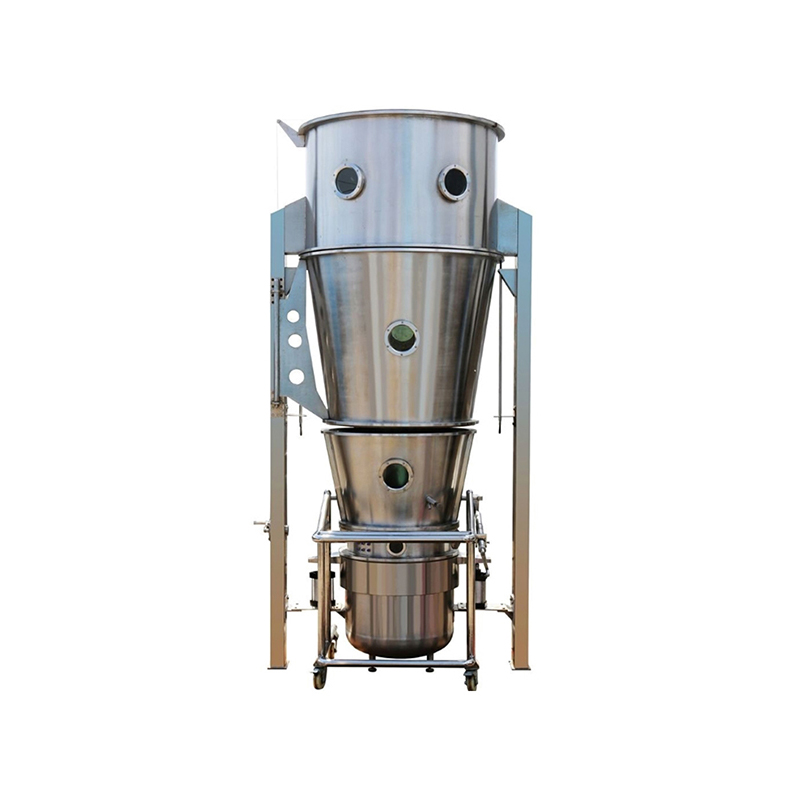How Fluid Bed Granulators Are Transforming Manufacturing Processes Across Industries
The Science Behind Fluid Bed Granulation
Fluid bed granulation is a process where fine powders are converted into granules by introducing them into a chamber with a stream of hot air. The continuous flow of air suspends the powder particles, allowing them to move freely and interact with a binder that is sprayed onto the bed. The binder binds the particles together, forming larger agglomerates, which are then dried by the hot air stream. The result is a consistent and uniform granule that is easy to handle and has improved flowability and compressibility.
The process is typically carried out in two stages:
Granulation: In the granulation stage, the fluidized bed of particles is sprayed with a liquid binder, which causes the particles to agglomerate into larger granules. The amount of binder, spray rate, and fluidization speed are carefully controlled to achieve the desired granule size and structure.
Drying: Once the granules are formed, the fluidized bed is heated to dry the granules, ensuring that any moisture content is removed. The granules are then solidified and can be processed further.
Key Advantages of Fluid Bed Granulators
Superior Granule Consistency: One of the key benefits of fluid bed granulators is their ability to produce highly consistent granules in terms of size, shape, and moisture content. This consistency is crucial in industries such as pharmaceuticals, where the precise control of granule properties affects the performance of the final product.
Increased Production Speed: Fluid bed granulators can handle large batch sizes, processing materials quickly and efficiently. This makes them ideal for high-volume production environments where speed and throughput are critical to meeting market demand.
Lower Operational Costs: Fluid bed granulators are energy-efficient and can reduce the overall cost of production. By optimizing airflows, heat distribution, and drying times, modern FBGs are able to minimize energy consumption and reduce operational costs.

Multi-Functional Capabilities: A fluid bed granulator is not just for granulation; it can also be used for drying and coating applications. This multi-functionality allows manufacturers to save on both space and investment by using a single piece of equipment for multiple steps in the production process.
Enhanced Product Quality: The controlled environment in which the granulation and drying take place ensures that the final product has a high level of quality. This is especially important for products like pharmaceutical tablets, where uniformity and consistency are essential for product efficacy and safety.
Applications of Fluid Bed Granulators in Different Industries
Pharmaceutical Industry: Fluid bed granulation is widely used in the pharmaceutical industry for the production of tablet formulations. The process is ideal for creating granules with specific characteristics, such as size and moisture content, which are crucial for tablet pressing and drug release profiles.
Food Industry: The food industry benefits from fluid bed granulators in the production of granules for powdered food products, such as flavorings, nutritional supplements, and snack products. The granulation process enhances the shelf life and texture of food products, while maintaining flavor consistency.
Chemical Industry: Fluid bed granulators are also used in the production of fertilizers, detergents, and other chemical products. The precise control over particle size and flow properties ensures that the final product is easy to handle, store, and package.
Cosmetic and Personal Care: The cosmetics industry uses fluid bed granulators to produce fine powders for makeup products. The uniform granules produced are essential for ensuring smooth texture and easy application of products like foundation, blush, and eye shadow.



 English
English русский
русский عربى
عربى Türk
Türk




